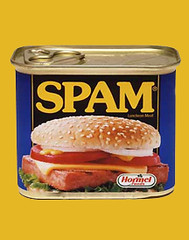
Experian Marketing Services' CheetahMail recently released an analysis that ought to wake up bulk promotion supporters, especially those relying on email as a means to deliver messages. The analysis pinpoints just how significantly emails from trusted sources outperform other marketing campaigns, even when the offer is the same or inferior.
• Friends-and-family emails had 43 percent higher open rates and 29 percent higher click rates compared to bulk promotions.
• Friends-and-family email transaction rates were 85 percent higher and 2.5 times higher against bulk promotions.
• Friends-and-family emails generate higher sales per email than bulk promotions and much higher referral rates.
• Friends-and-family emails with links to social networks had higher referral rates than direct-to-offer links.
Bulk Promotions Are Slowly Going Bust.
Before every social media expert nods in agreement, it might be important to point out that the trust measurements are changing in 2011. While the current trend is to trust people with significantly higher frequencies, the public is already beginning to slowly shift away from "brand ambassadors" who are attempting to supplant the blind bulk promotions.
Friends might trust friends who share links to social networks, but when "friendz" share simply to make pennies on the dollar or because they are enamored with a brand, then any established trust will begin to evaporate. In fact, many people have already filtered the top tier of abusive sharers — that one uncle who has nothing better to do than pass along chain emails and conspiracy memos. They were the first to go and certainly not the last.
Only Careful Sharing Will Increase Trust.
While most "influence" measures are built on a formula of little more than "volume times frequency times mass," those score-trumping trends, especially when linked to rewards for the sharer, will eventually crash. Ergo, while we all appreciate friends who share a new music discovery or review site, people are less inclined to "like" pages and "follow" brands because their second cousin likes to win contests and perks.
The trust evaporation factor may even happen faster as those once engaged are pelted by direct promos because they wanted to help a friend win a T-shirt or some other lowbrow novelty. Smart marketers already know this and have adjusted to accordingly. And those that don't? Many are already crumbling, including some who are nothing more than consultants.






















